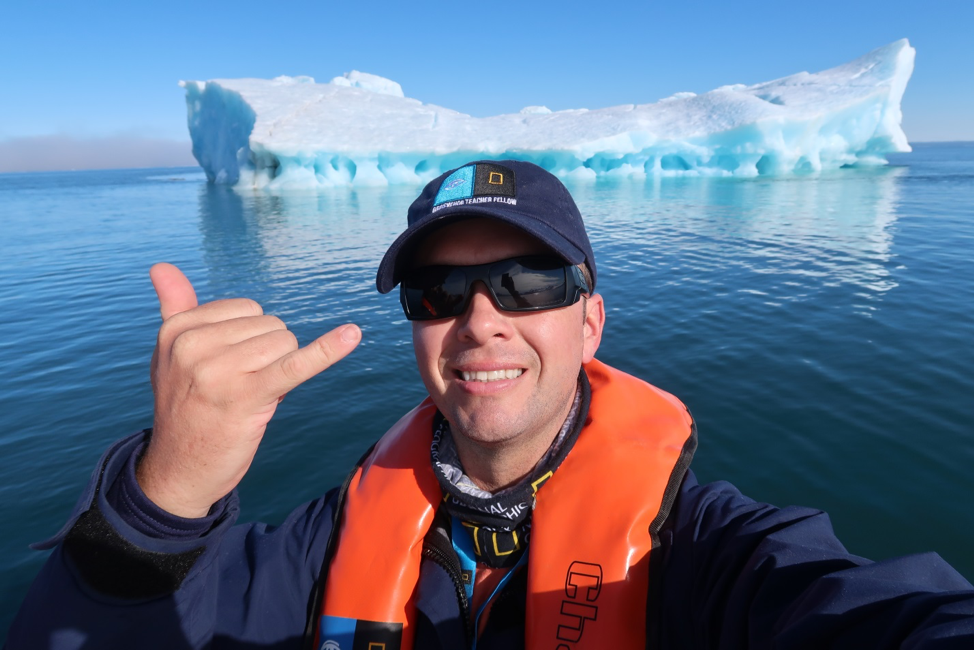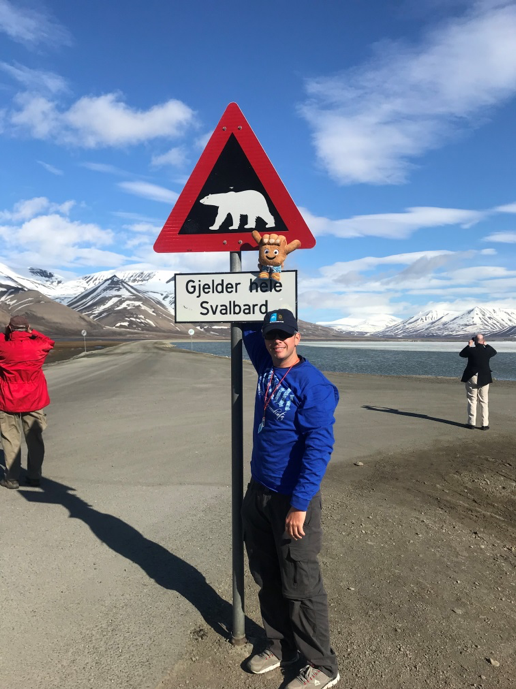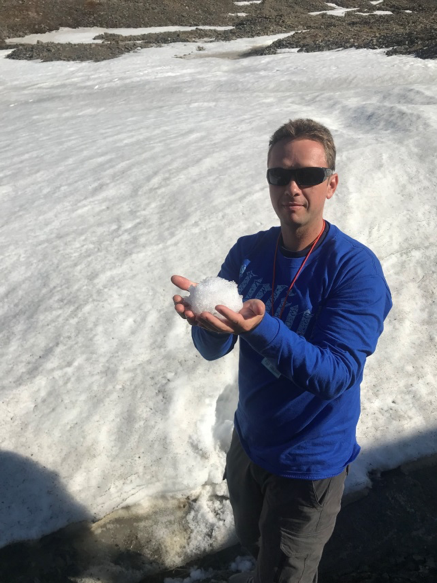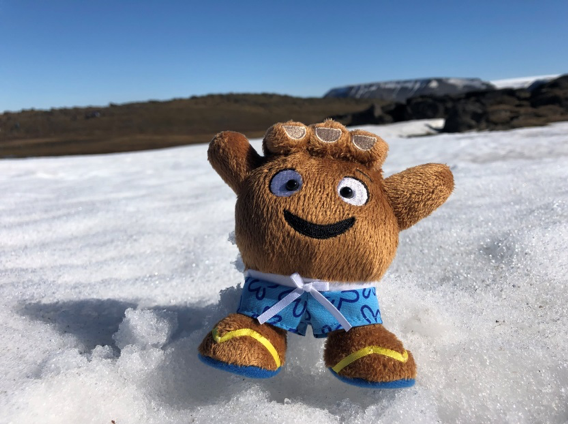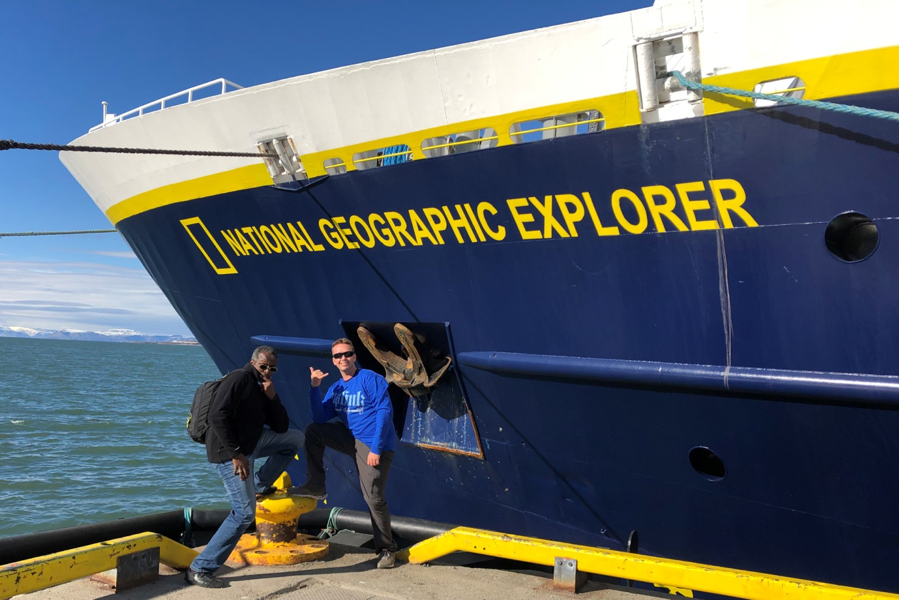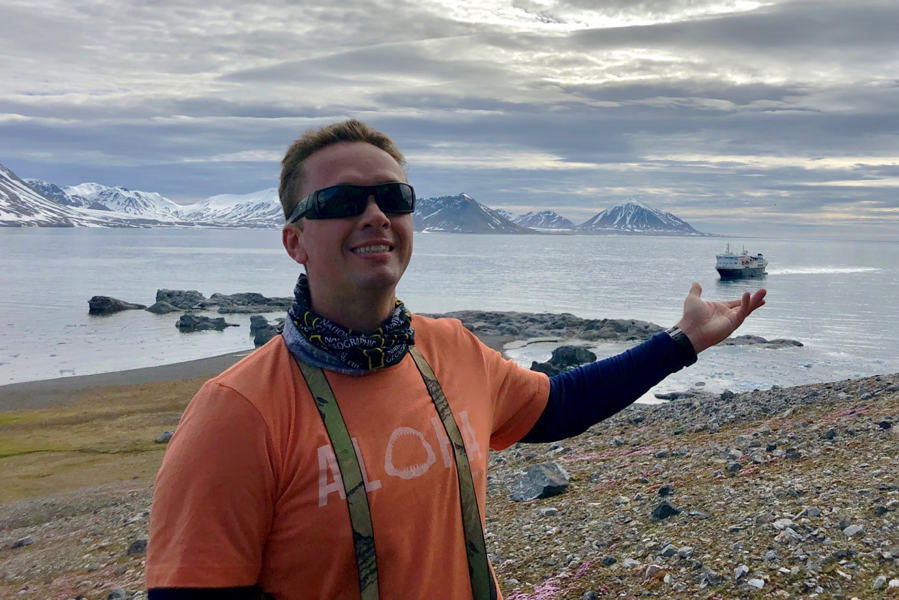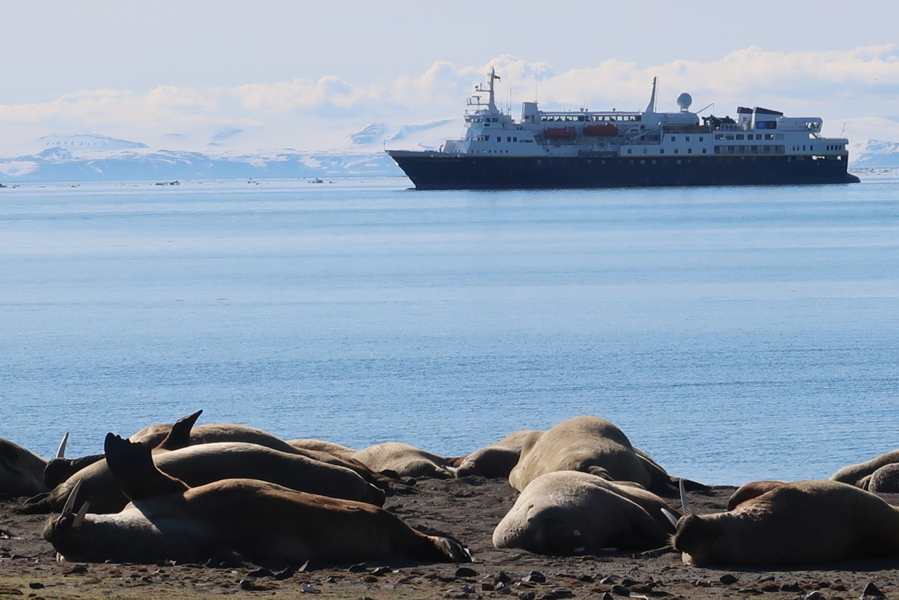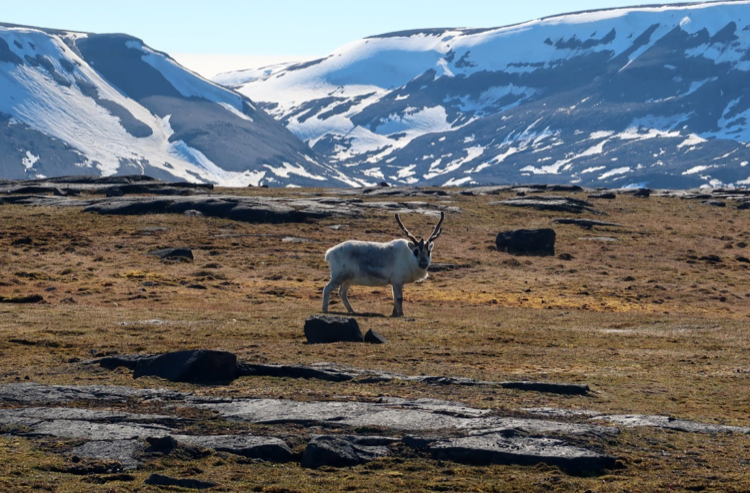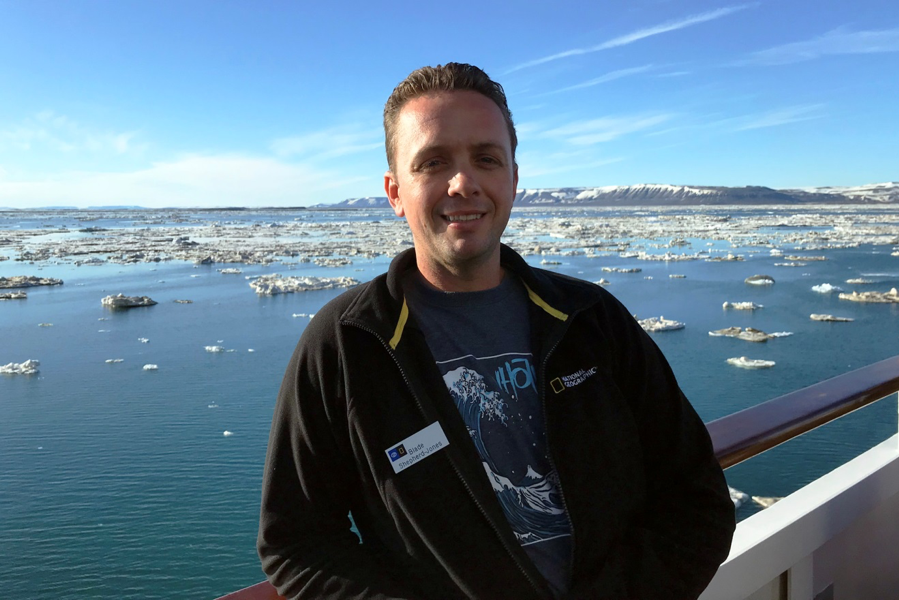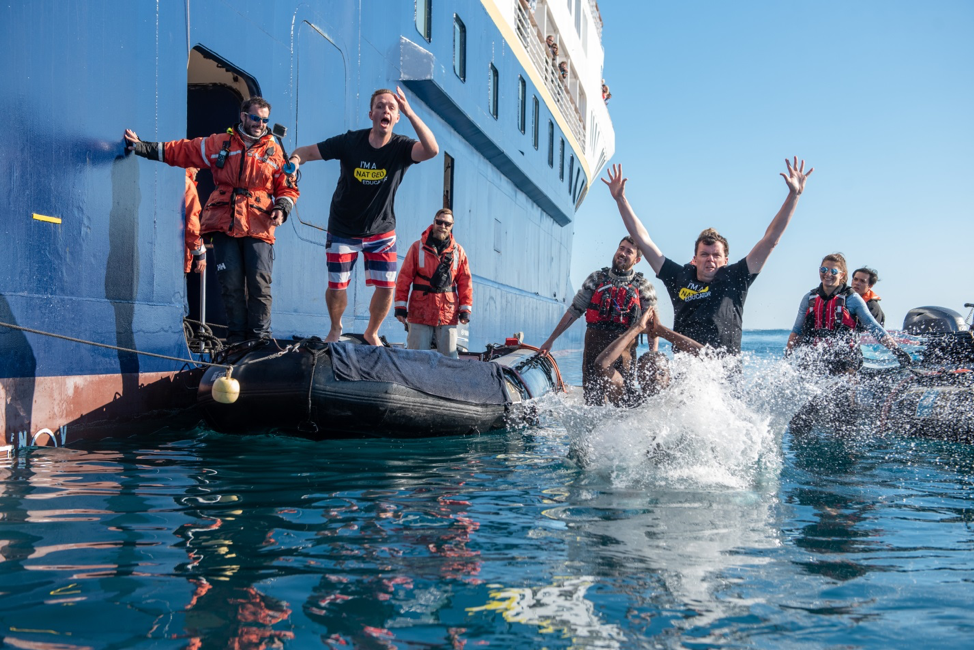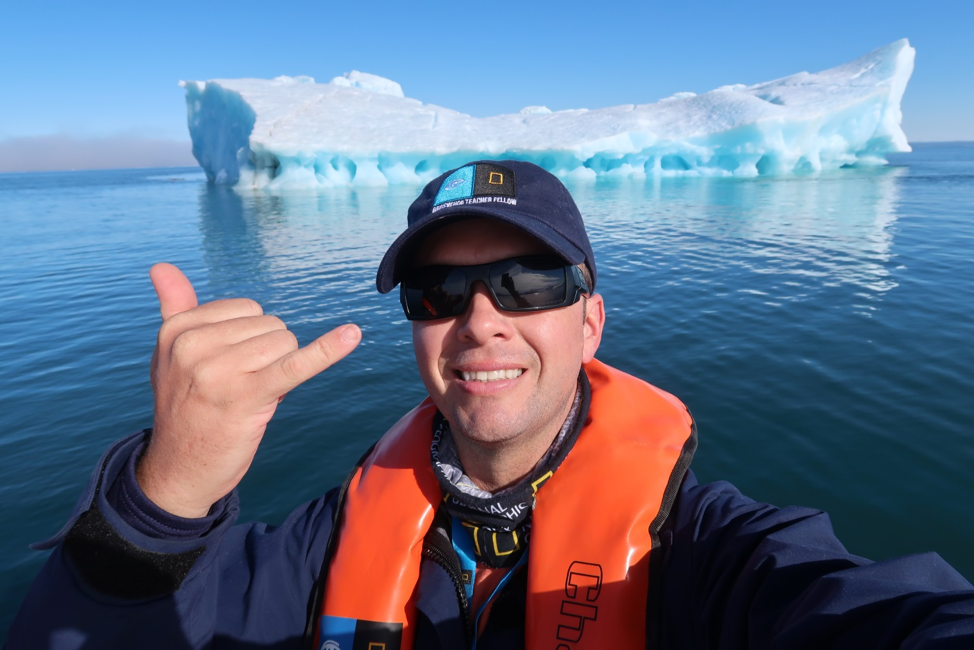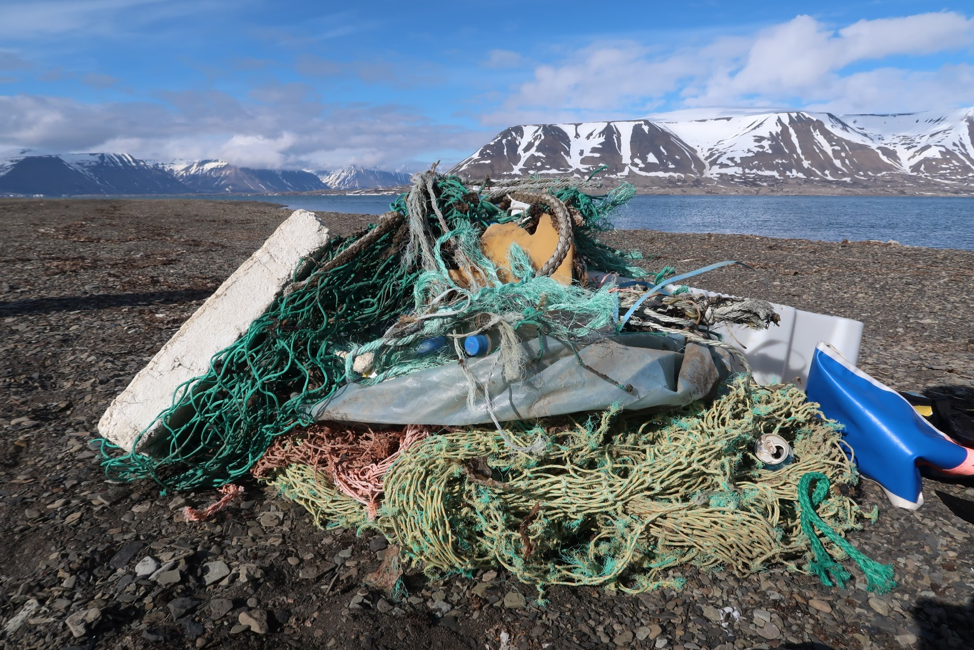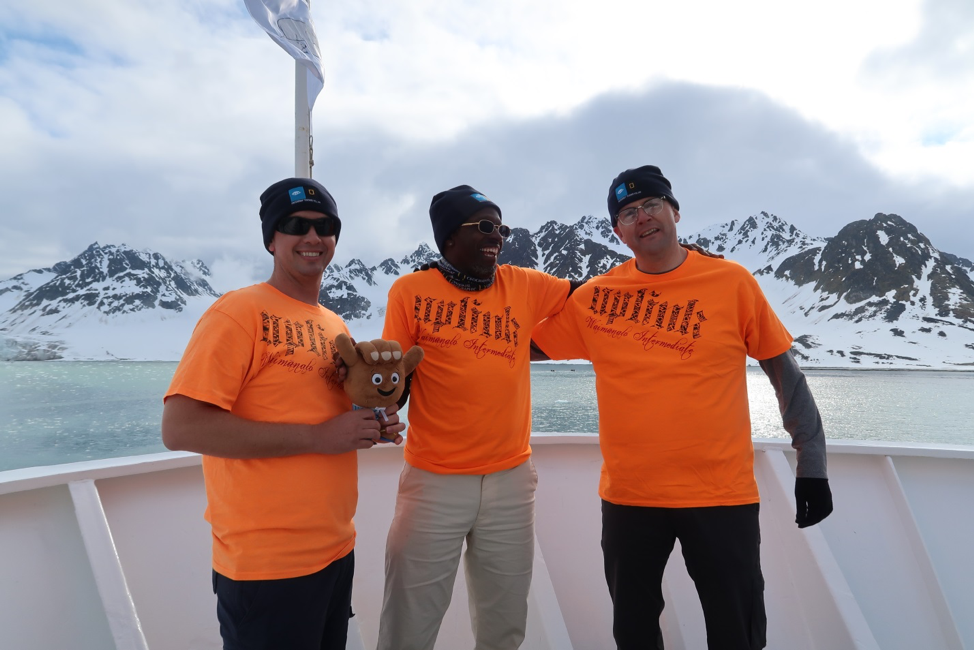Here are some scenes and stories from his adventures
Posted: July 12, 2019
Waimanalo Elementary and Intermediate School teacher Blade Shepherd-Jones is back from the trip of a lifetime.
In April, we told you the Kailua native was chosen to be one of this year’s Lindblad Expeditions and National Geographic Grosvenor Teacher Fellows alongside 45 educators from the United States and Canada. It’s the largest group ever selected in the program’s 13-year history.
Last month, Shepherd-Jones boarded the National Geographic Explorer on a journey to Svalbard, where he worked with Lindblad-National Geographic experts to study and document Arctic wildlife, geology and culture.
Now he’s back and eager to share his experience with us! Check out his digital diary below.
“What is the polar opposite of tropical Hawaii? Arctic Svalbard! Svalbard is a fantastic land to my students, a place they might never get a chance to go and feel the difference of the temperature. I will use myself as a vessel to bring back the experiences of this Arctic wonderland to my class through sharing pictures and videos.”
[1] “Meet Shaka-chan. His goal is to share the meaning of aloha to the world. I wanted to bring a little piece of Hawaii with me in the high Arctic. When using the photos for lesson in my class, I hope Shaka-chan can help the students connect to Svalbard and add a little humor.”
[2] “The 367-foot National Geographic Explorer was my mode of transportation to see the marvels of Arctic Svalbard. Svalbard is a living classroom. I was able to witness numerous natural phenomena, examples of wildlife, ocean, weather, climate, and geology.”
[3] “Svalbard is over 1,000 miles away from Europe and the natural beauty is unbelievable. The National Geographic and Lindblad naturalists are a wealth of firsthand knowledge. For example, did you know that since polar bears are designed to stay warm in the Arctic, they can easily overheat even when chasing prey? And while not great at flight, little auk, a type of bird, can dive down 30 meters (98 feet) underwater. Bowhead whales live an average of 200 years. I could go on!”
[4] “The unique wildlife in these pristine places are unimagined. On our expedition, we saw caribou, walruses, polar bears, various types of seals, seabirds, and five different species of whales. The scientific name for walrus is Odobenus rosmarus. Odobenus comes from odous, Greek for ‘tooth,’ and baino for ‘walk,’ based on walruses using their tusks to pull themselves out of the water.”
[5] “Curious caribou. Svalbard reindeer do not have natural predators, minus humans. Here’s a fun fact: male reindeer lose their antlers during the winter. (Sorry, Rudolf.)”
[6] “There’s no time to nap in Svalbard! With the midnight sun (sun never sets), there’s so much to see and to experience.”
[7] “It wasn’t all hard work. The Polar Plunge is an Arctic tradition, and it was good for this island boy to get into the ocean. Honestly, it did not feel that cold to me. I would have loved to stay in the water longer. When I go scuba diving in Hawaii, I do not wear a wetsuit.”
[8] “The more I learned about Svalbard, I noticed many similarities to Hawaii. Both are islands in the middle of the ocean. Both host amazing biodiversity of life and natural beauty. Many species are only found there. Both have black sand beaches and volcanic rocks. This will be an engaging lesson for the students to discover the similarities and difference of both locations.”
[9] “Like Hawaii, Svalbard is impacted from marine debris. This pile was found at Bellsund, an area in the middle of nowhere. Minus a few trapper huts, there are no cities, towns, roads nearby. According to naturalists, most of the trash is from the fishing fleet, northern Russia, and the Gulf Stream current. We share one ocean. This is a lesson that I must share with my students—to show our fragile planet and how interconnected the world is.”
[10] “Being a Grosvenor Teacher Fellow has been a once-in-a-lifetime experience. Not only did I get to explore Svalbard, I was also immersed in interactive professional development. It has been great to collaborate with the 44 other teacher fellows of this program. I look forward to sharing my experience with my students, to enhance their learning with more than just words on pages.”
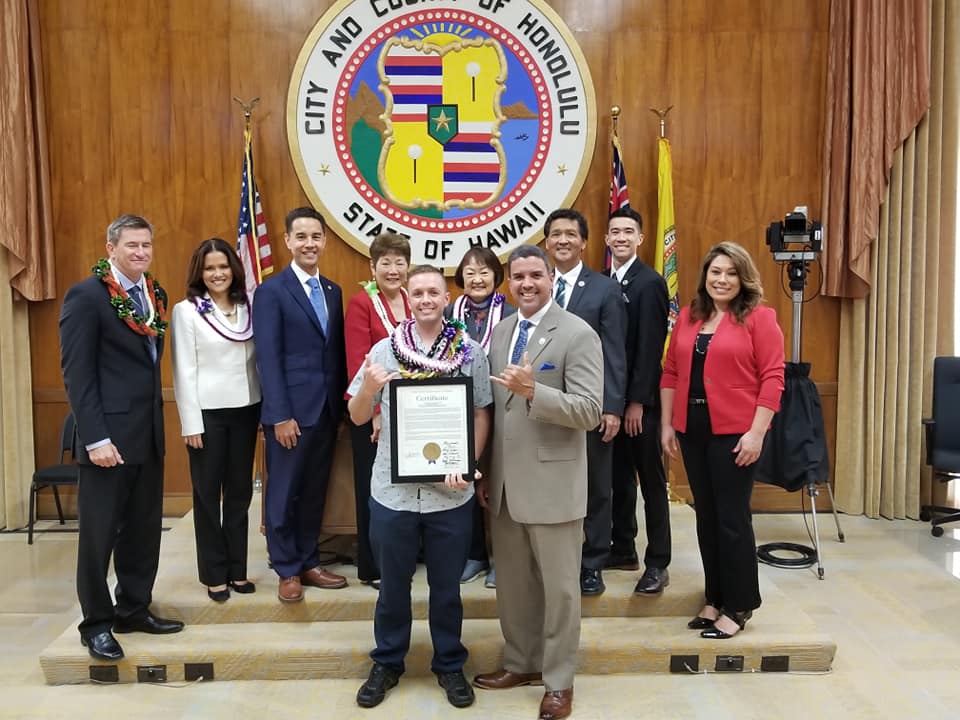
“Upon my return, I was awarded a certificate as an outstanding educator and recognized by the Council of the City and County of Honolulu for being selected to the National Geographic-Lindblad Arctic Expedition.”
If you’re interested in pursuing a similar opportunity, Shepherd-Jones recommends starting with National Geographic Educator Certification.

